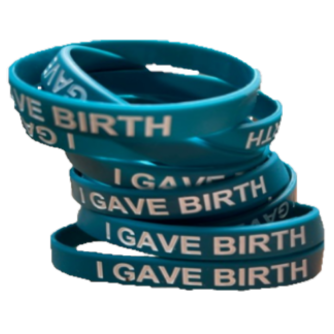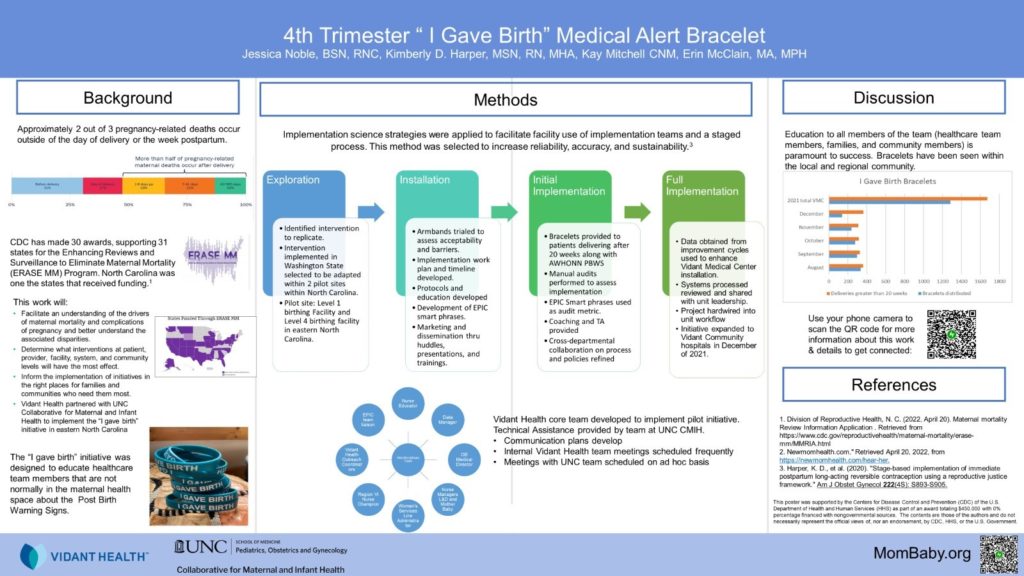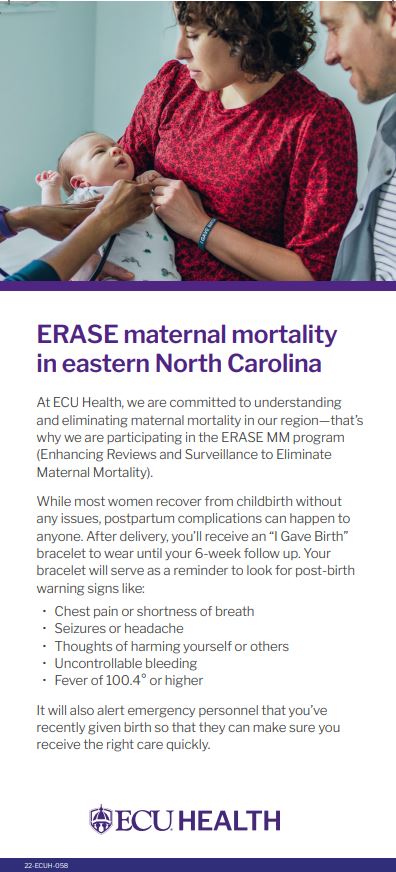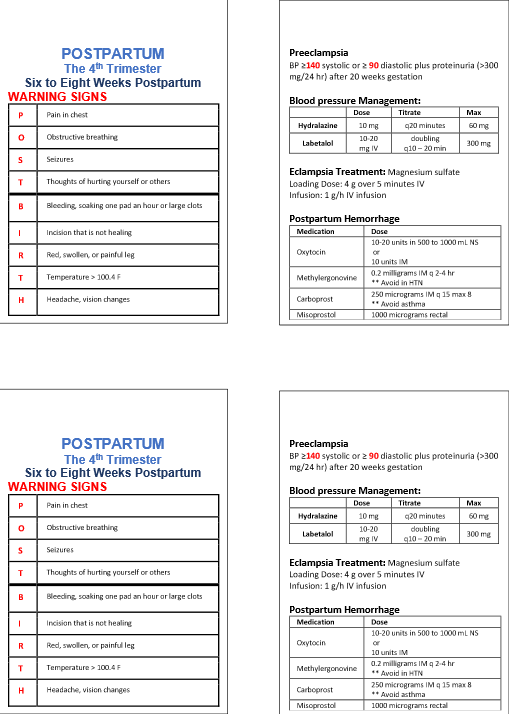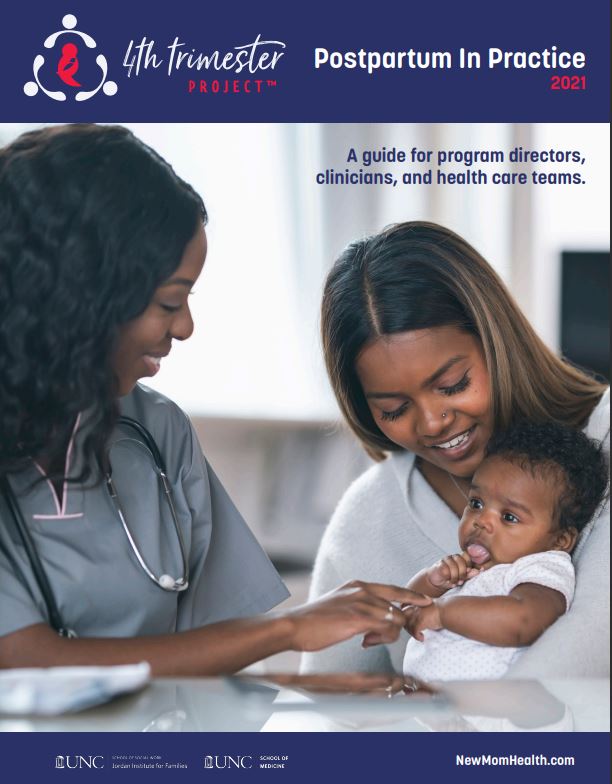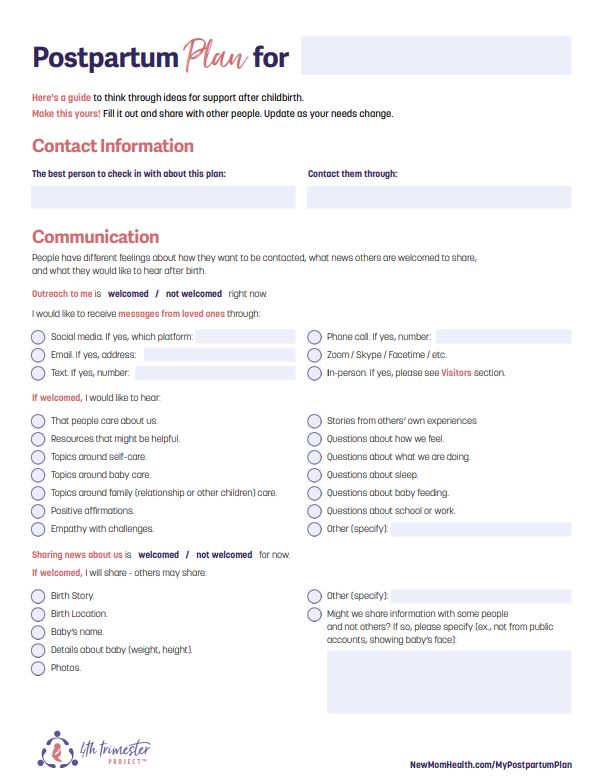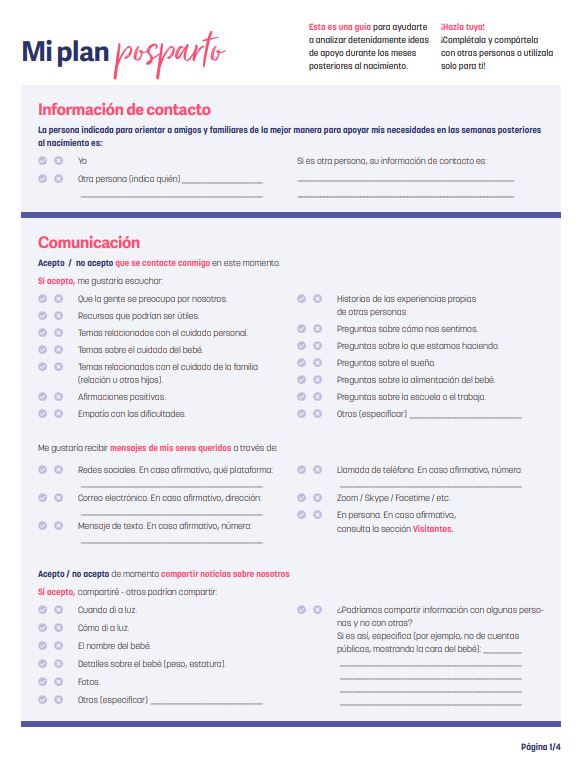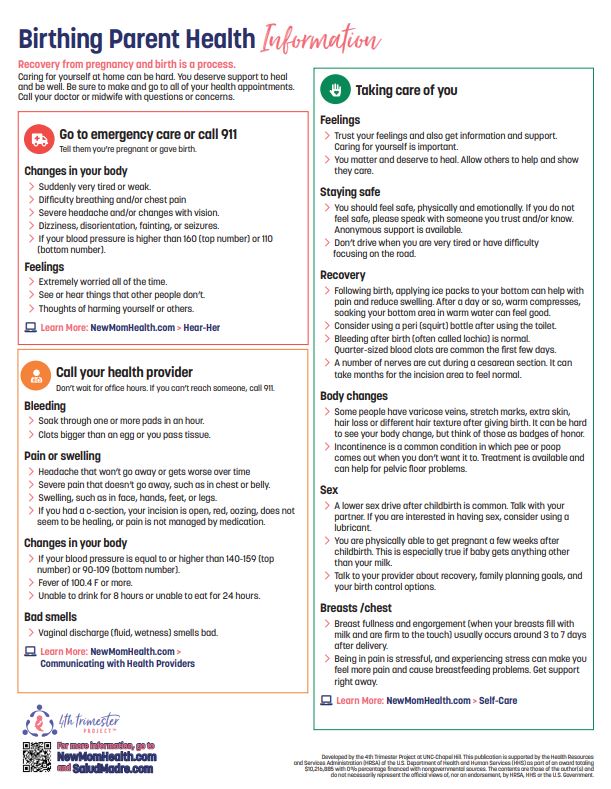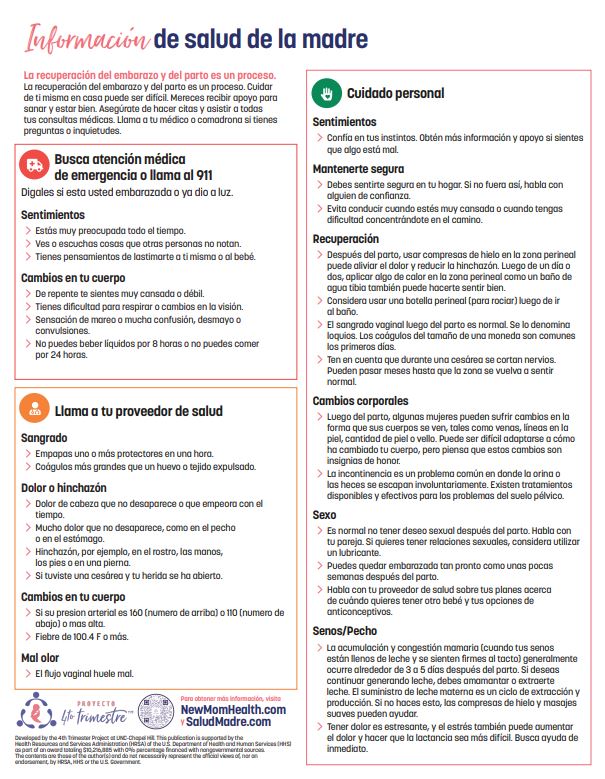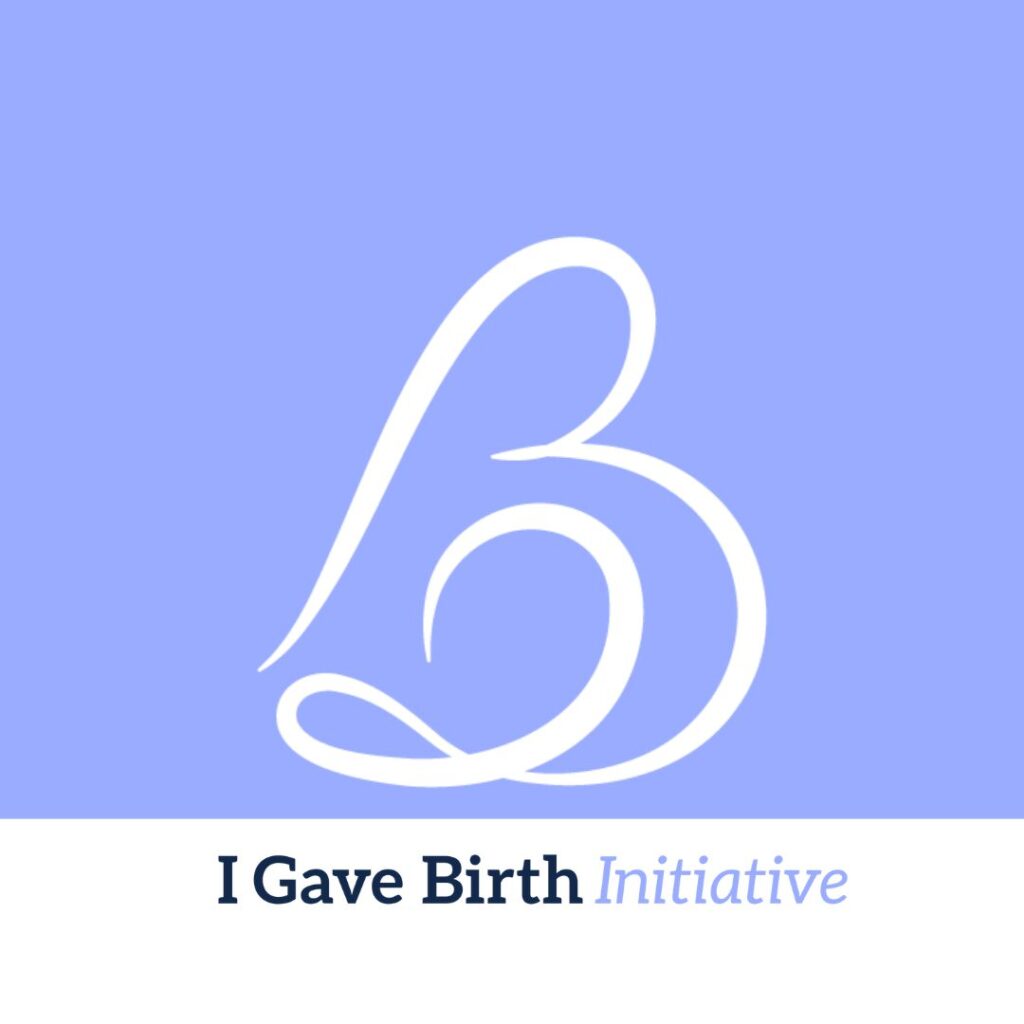
The I Gave Birth Initiative assists in identifying ways to reduce maternal mortality, complications of pregnancy and up to a year postpartum.
Our CMIH team collaborates with North Carolina hospitals, clinics, and communities to provide free training on maternal warning signs during pregnancy and 1 year postpartum to provide assistance with planning and implementation of obstetric emergency protocols.
Approximately 2 out of 3 pregnancy-related deaths occur outside of the day of delivery or the week postpartum. More than 80% of pregnancy-related deaths were preventable.
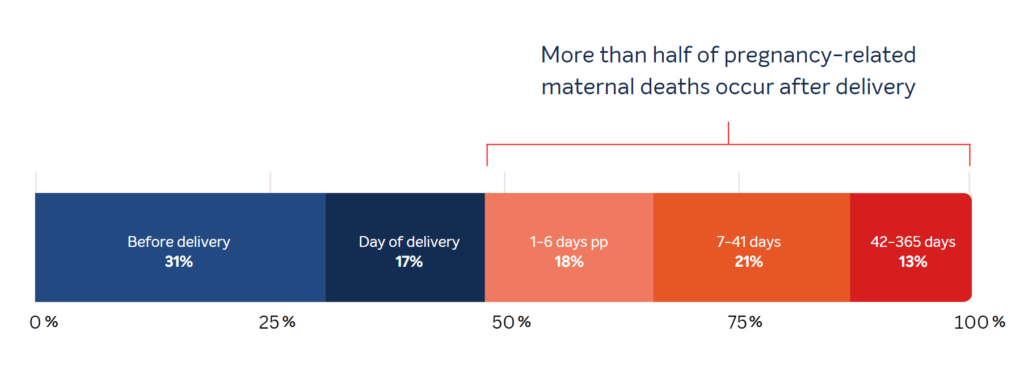
The “I Gave Birth” bracelet initiative aims to improve the care of patients who present for medical care during the postpartum period. The bracelets serve as a reminder to staff to look for post-birth warning signs including:
- Chest pain or shortness of breath
- Seizures or headache
- Thoughts of harming themselves or others
- Uncontrollable bleeding
- Incision that is not healing
- Red or swollen leg, that is painful or warm to touch
- Fever of 100.4°F (38C) or higher or 96.8°F (36C) or lower
Bracelets are provided to patients delivering a live infant or stillbirth after 20 weeks gestation along with education about post-birth warning signs.
For more resources and printable handouts
- AIM Statement Worksheet
- IHI—QI Essentials Toolkit: Maternal Health
- IHI—Science of Improvement: Forming the Team
- Quality Improvement Project Measures Worksheet
ECU Health Medical Center is the only tertiary care center in Perinatal Region VI; they were influential in allocating best practices and quality improvement initiatives. Below you will see the presentation overview with background, methods, and discussions surrounding the ‘I Gave birth’ initiative. Informational flyer and badge ID cards are included below, serving as a visual reminder of the initiative and care in the 4th trimester.
References
AWHONN. POST-BIRTH Warning Signs education program (n.d.). https://www.awhonn.org/education/hospital-products/post-birth-warning-signs-education-program/
CDC. (2016, January 1). CDC Newsroom: Hear Her: CDC campaign highlights Warning Signs of Pregnancy https://www.cdc.gov/media/releases/2022/p0919-pregnancy-related-deaths.html
Roosa Tikkanen et al. (2020, November 18). Maternal mortality and maternity care in the United States compared to 10 other developed countries. https://doi.org/10.26099/411v-9255
UNC Collaborative for Maternal & Infant Health has the ability to serve birthing facilities across North Carolina by providing training and technical assistance.
AWHONN Post Birth Warning Signs online seats is an offered course available through the AWHONN Learning Center. These codes were made possible by funding received for ERASE MM. During our 4th grant year, UNC CMIH worked with eight (8) facilities to implement the AWHONN Post Birth Warning Signs (PBWS) toolkit and training.
For more information visit: POST-BIRTH Warning Signs Education Program – AWHONN
Maternal Warning Signs training incorporates content developed by the CDC Urgent Maternal Warning Signs campaign into a one-hour long training that can be tailored to meet the needs of the target audience.
Maternal Warning Signs Target Audience: doctors, residents, nurses, emergency personnel, doulas, lactation consultants, and childbirth educators.
Training is available as instructor-led or eLearning.
Visit our free eLearning Platform: Maternal Warning Signs Training for Providers (thinkific.com)
- Enhancing Reviews and Surveillance to Eliminate Maternal Mortality (ERASE MM) | CDC
- NC Maternal Mortality Review Report (ncdhhs.gov)
- Urgent Maternal Warning Signs | AIM (saferbirth.org)
- Urgent Maternal Warning Signs | CDC
- “HEAR HER Campaign | CDC www.cdc.gov/hearher/index.html
- MAHEC Podcast: Just US: Before, Birth, and Beyond-Season 3, Episode 13: NC “I Gave Birth” Bracelet Project
DISCLAIMER: This webpage was supported by the Centers for Disease Control and Prevention (CDC) of the U.S. Department of Health and Human Services (HHS) as part of an award totaling $450,000 with 0% percentage financed with nongovernmental sources. The contents are those of the authors and do not necessarily represent the official views of, nor an endorsement, by CDC, HHS, or the U.S. Government.

